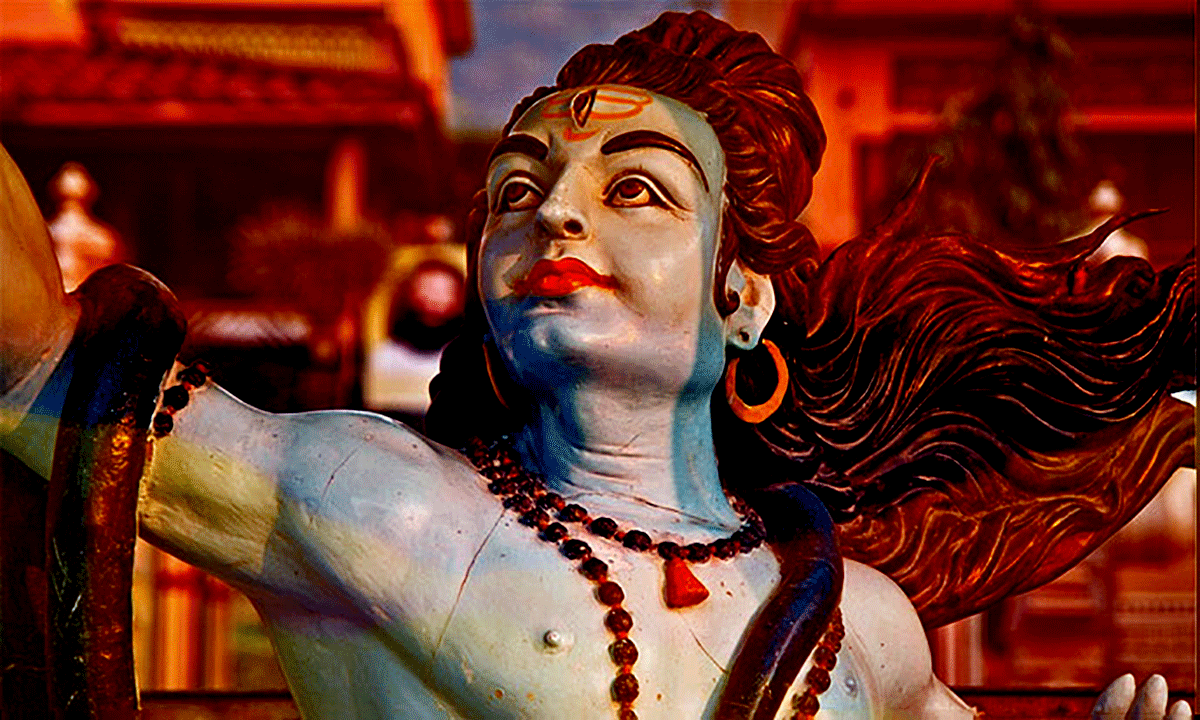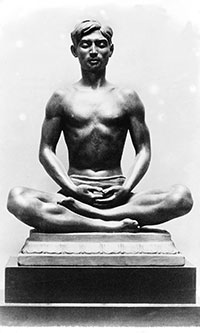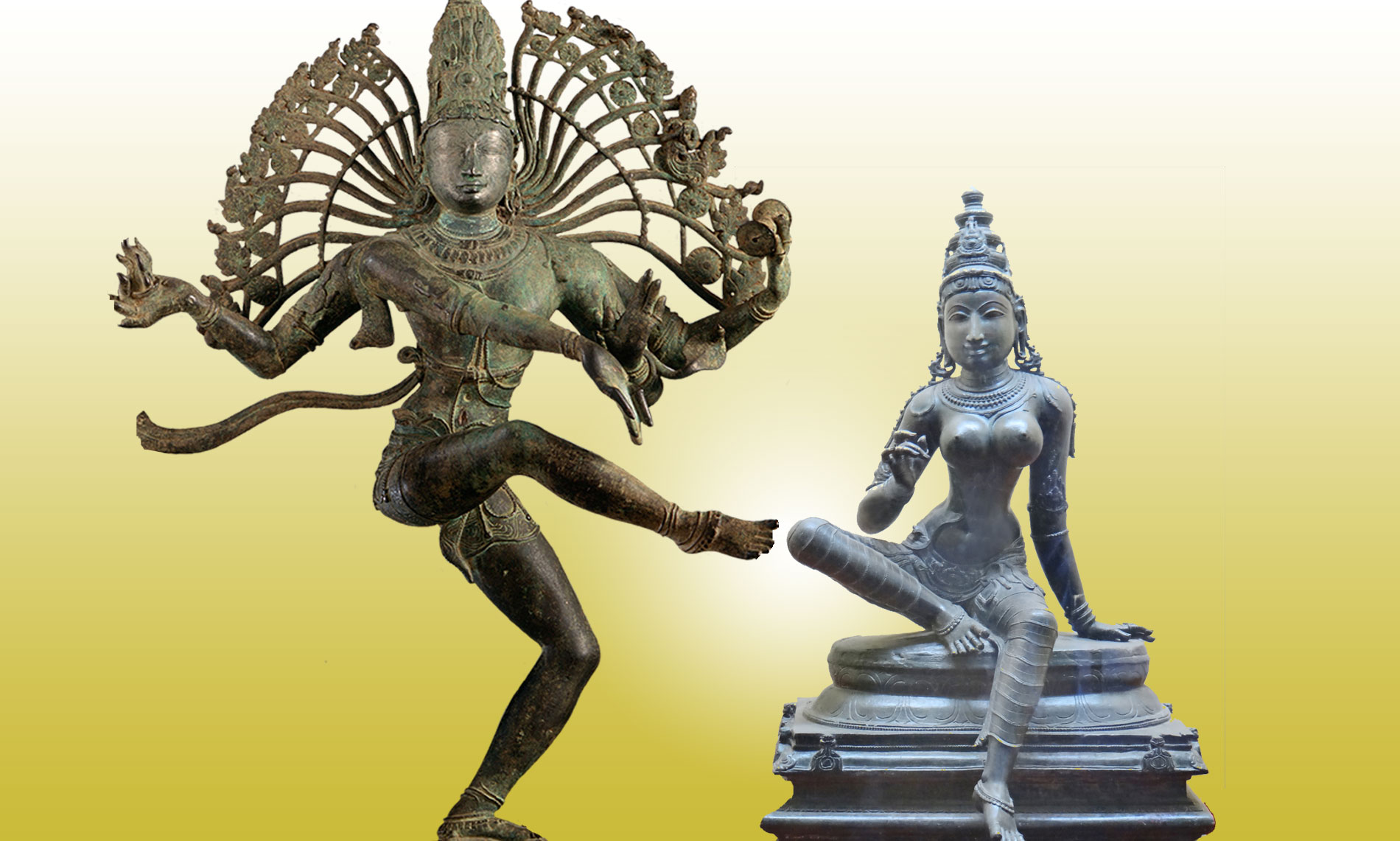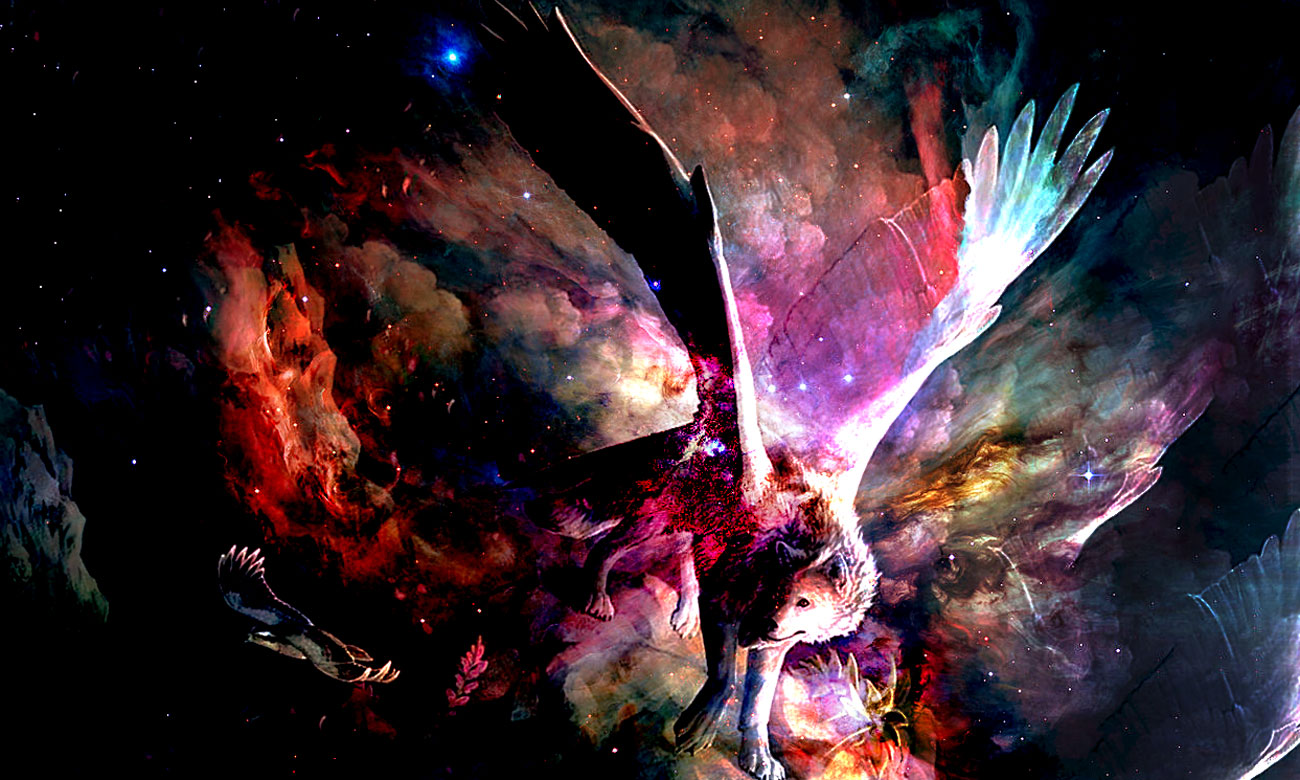
Four yugas, four ages crucify the world, four kinds of vertigo, four bridges between earth and sky. Yuga, kalpa, mahayuga, the figures given by Hinduism are hallucinating. Traditional Hindu wisdom considers that the universe has known four epochs; we are in the last one. What’s coming next? An eternal recommencement? The end of illusion?
Four Ages
The four yugasanskript yuga : age, epoch, are echoing with the four ages of ancient Greece. They sometimes have the same name (golden, silver, bronze and iron) which is also found in ancient Persia … what may suggest a common origin.
This time shared in long periods or divine years is inherited from a developped civilization, Atlantis for instance.
Even their order evokes a decline, confirmed by their length, each age being half the length of the previous one. According to French indianist Alain Daniélou,see below Golden Age is 32,000 years long.
It is followed by Silver Age which is 16,000 years long, then Bronze Age is 8,000 years long, and finally Iron Age is only 4,000 years long.
They are shorter and shorter, because they are harder and harder to bear. Anyway, the exact length of a cycleAlso called maha-yuga varies a lot depending on the author: some hindu sages spoke about hundreds thousands of years, and even millions of years, for one cycle.
The present estimation, 60,000 years for a whole cycle, was proposed by the french indianist Alain DanielouSee below who found these numbers in the old shivaite tradition. But he insisted on the fact that those figures, like any, are just an indicative value.
Like every ancient civilization, the vedic tradition mentioned huge and unbelievable lengths of time. They point to the extreme ancientness of our species, to the fabulous length of its history. But datations evolve faster than theories…

Alain Daniélou
Indianist and musicologist researcher Alain Danielou was born in 1907 in Neuilly-sur-Seine, near Paris France. He travelled across India studying sanskrit and hindi languages, as well as hindu philosophy and theology. He translated the writings of a famous Sannyasi,Renouncing man in Hinduist tradition Swami Kârpatrî, who initiated him to the rites of shivaite hinduism. He died in Italy in 1994. He left several important essays – for French readers only: La fantaisie des dieux et l’aventure humaine, Origines et pouvoirs de la musique, Shivaïsme et tradition primordiale. where he shows the inner vision of shivaism, probably the more ancient religion of the world.
Endless Ocean
I must say that a majority of Hindouists desn’t share this point of view. For them, time is an endless ocean with no shore.
“According to Hindu scriptures, all mortal beings are destined to pass through four great epochs in every cycle of creation and destruction. This divine cycle turns full-circle at the end of what is known as kalpa. A kalpa is a yuga cycle, which is a period of 10,000 divine years, and is divided into four ages or yugas. According to one calculation, one yuga cycle is estimated to be 4,320,000 years, and one kalpa 4,320,000,000 years.”(source)
“The four great epochs in Hinduism are: Satya Yuga, Treta Yuga, Dwapar Yuga and Kali Yuga. Satya Yug or the Age of Truth is said to last for four thousand divine years, Treta Yuga for three thousand, Dwapara Yuga for two thousand and Kali Yuga will last for one thousand divine Years that equals to 432,000 earthly years.
It is also believed that three of these great ages have already passed away, and we are now living in the fourth one. What these ages exactly mean, it’s hard to explain for the rational mind.” (source)
Dizzying Figures
And yet, there are things to say. The first is the enormity of the figures given in India. In the face of our faint hesitations as to the origin of man, in the face of the ridiculous age of a million years that we give to our species, the immensities given here are vertiginous.
No doubt they are very close to reality. The mistake here would be to apply the logical and rational spirit of finite oxydantalwrong spelling is volunteer which is often a pleonasm. The history of our species is not in millions, but in billions of years probably, and perhaps more.
These figures give an idea of the scale of divine lives compared to ours. I did the same with the Divine scale of sizes compared to ours. As far as we are concerned, the complete cycle lasts 60,000 years. This is the human scale chosen by the Indian Alain Daniélou, which I use in this site.
Second conclusion, even more important. What ancient Indian thought teaches us is that time is not linear and continuous, as our Western view suggests — quite childish, actually.

Cyclic Time
Cyclical time is the ultimate encyclical. Yes, time is cyclical, all ancient philosophies tell us so. Hinduism goes even further: it gives a time scale – huge indeed – which allows to understand the extent of the phenomenon.
At the end of a gigantic revolution, time travels a good portion of eternity before returning in its tracks. But for the full cycle to be achieved, we must be patient, counting on our fingers more than four billion years. Which is about Earth’s age…

We have understood that the kalpa or grand cycle is not on our scale. It also far exceeds the scale of a civilization. The kalpa is a divine notebook: the calendar of the gods before.
Terraformation
They have domesticated this planet throughout the seven days of creation. They first came several billion years ago to pass the first layer. And then, over the eons, they came six more times. They did the right thing. Earth grew under their watch. For them, it is a job like any other, so they do it well. On behalf of the Goddess, imperatice of the thousand stars, the Terraformers have domesticated the wild planets.
These enormous time-frames are not our concern. To return to our scale, we need only look at the small cycle, that described by Daniélou. Sixty thousand years is already much more than our memories, much more than human history. 60’000 years ago began the shift between prehistory and protohistory.
Six Mahayugas
The oldest fossils of the genus Homo date back to 2.8 million years ago, with Homo habilis. New dating places the oldest Homo sapiens around 300’000 years ago. The evolutionary history of man is still far from being fully established, but let us already remember this figure, 300’000 years. It gives Homo sapiens a duration of 6 cycles or mahayugas.
Because the cyclic time also indicates that in each great kalpa there is a multitude of sub-kalpas, the mahayugas. We are in one of them. At the very end of a mini kaliyuga lost in a gigantic kaliyuga.
We’re in trouble, if you ask me. But you already knew it: just open your eyes to the misery of the world, pollution, generalized selfishness. Nothing down here evokes the golden age… For him to come back, we will have to arm ourselves with patience. Except that for our humanity, the golden age is behind, 60’000 years in the past. The next golden age will concern a new mankind.See below: kali yuga
Enduring humanity
If it certainly exceeds the possibilities of human memory, the immense time scale of the Hindus shows us one of the great mysteries of our species: its longevity, its resistance, its invulnerability. Some supermen made it real …
Through countless cataclysms, famines, earthquakes, floods, droughts, massacres, nuclear winters, extinctions of animal species, against all odds, against the flames of Gehenna and the Leviathan of the Abysses, our valiant species has never disappeared.
Whatever happens, the human race is holding on. Its incredible age is a powerful comfort for the future. A truth inscribed in letters of fire in the heart: beyond individual death, the human race is immortal. Until its next extinction, so that another species, more evolved, more generous, more noble, can take the place left vacant. The former gods hate emptiness.
What is immortal is not a species, a planet, a galaxy, or a universe. When Shiva Baba finishes his dance, everything will fall apart. Except HIM, of course.

What will never die is the Spirit.
Satya yuga
The golden age lasts 32’000 years according to Alain Danielou. What can we say about it? Only one thing is certain, we are far from it. Very far. Especially do not believe that after the kali yuga which is the present age, we will know a new satya yuga. Our golden age ended 28,000 years ago. The one who will come after the end of the current kali yuga is not for us, but for the next humanity. Sorry. I can only tell you about the precedent that goes back 28,000 years.
The Goddess our mother is in great shape, she just comes out of her dormancy. See further the Kali yuga So it will fill with benefits the new humanity that it has just created. These humans are noble, courageous, heroic, but they take no pride in it. Pride is not on the agenda of the golden age.
No vice, no weakness meets there. Equality of the sexes, because all humans have two. Bisexuality, love is the noblest act and highest virtue. No racism and for good reason, in Satya yuga there is a single race. That’s about it.
There would be much more to say if my memory could go back that far. Hesiod has tried to describe in detail the different ages of humanity, he counts five. Indeed, after the bronze age, he adds the age of heroes or age of patriarchs.
But should we trust him? The Greco-Latin antiquity knew much less about these questions than the scholars of Asian proto-history, especially the sages of vedic India.
Treta yuga
According to Daniélou, it lasts 16’000 years, or half of the golden age which lasts 32’000 years. For the content, see the silver age.
Dwapara yuga
According to Daniélou, it lasts 8’000 years, or half of the silver age that lasts 16’000 years. For the content, see the bronze age
Kali yuga
According to Daniélou, the kali yuga or kaliyug lasts four thousand years. According to my own estimates, it will end within four centuries. Patience, my friends, patience. Anyway, when we get there, we’ll notice that all of this humanity, all humans of any color that are between six feet and two feet — will be gone. because the future golden age will concern a new humanity that we have conceived and to which the Goddess will consent to give a soul, she adores it.
We have benefited from his generosity, the humanities before too, it seems. Except perhaps the very first, that of the 50m giants and potatoes. They are called cyclopes in old legends, because their third eye was visible in the middle of the forehead. A beautiful spotlight capable of illuminating the darkest night, destroying men and beasts, burning forests and entire cities — able to heal the sick and awaken the deserving, if necessary.
As for the content of the kali yuga, we have been looking at it for four millennia, which I think were the worst since the beginning of this kalpa. Don’t worry, friend, four more centuries to mope and you will disappear for good. If you have survived so far, which is possible according to some geneticists. I heard one of them say that the humans who will live for many centuries are already born. Let us look for the worst profiteers, those who have amassed enough wealth to afford the advanced edge of cutting-edge genetics.
What a great time!

Asian Wisdom
- Heaven Decides
- Manu’s Ark
- Mount Meru
- The Seven Rishis
- Shiva and Shakti
- Shiva Paradise
- The Wedding Of Shiva
- The Nine Unknown Men
- Hindouism By Danielou
- Lamaism v Buddhism
- Pippala, the Buddha Tree
- Tantra: Enlightenment Through Sex
- True Fake Yoga
- Kamasutra
- Believe Without Believing
- What faith?
- Celestial Cathay
- The Moral Of Confucius
- Confucius And Vital Spirit
- Tao Of Lao Tzu
- Mortal Remorse
- Yin Yang
- The Chinese Paradise
- The Four Yuga
- Chen, Awakening Lightning


